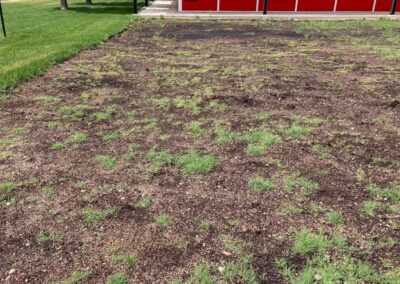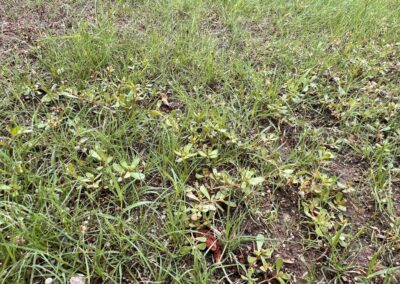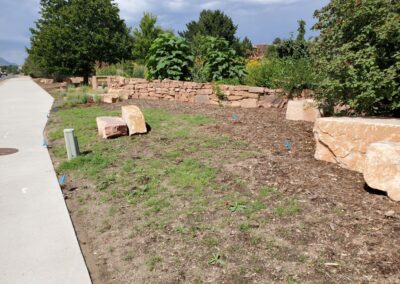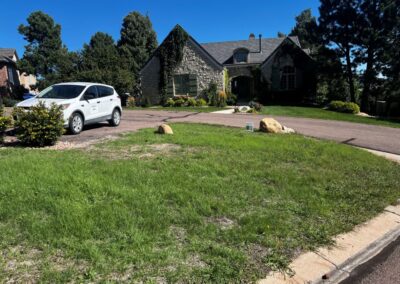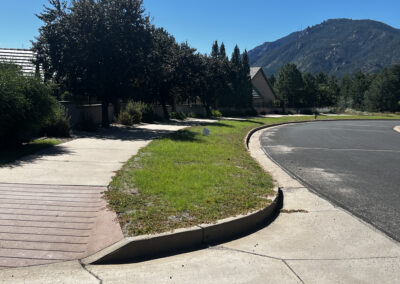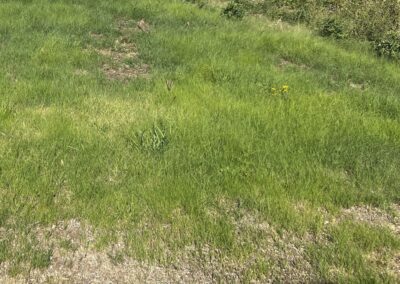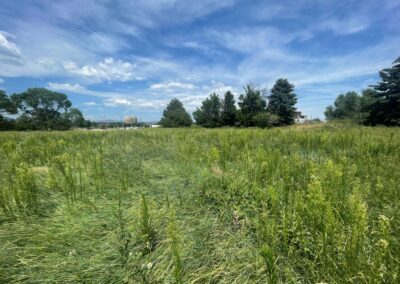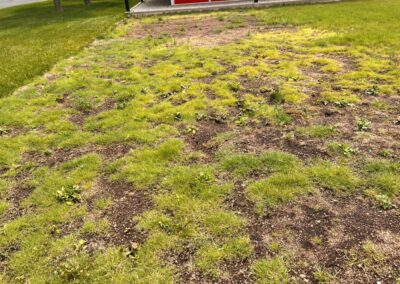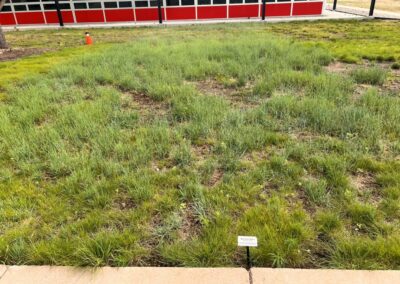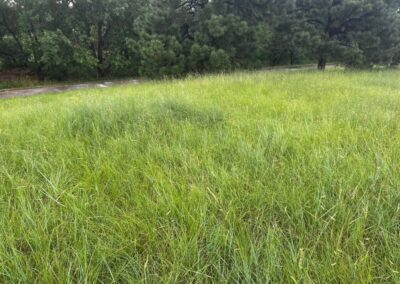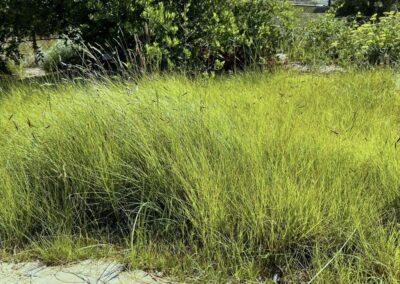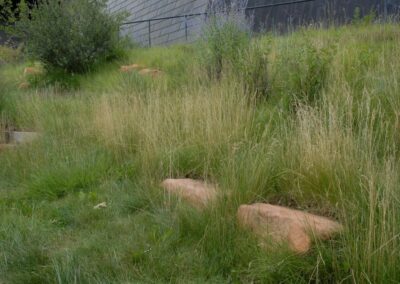The Timeline of a Seeding Project
Here’s what to expect on your journey to a fully-grown, native grass landscape that provides significant water, maintenance, and ecosystem benefits:
Year 1: Seeding and weed management
Your grass seedlings will start small and fill in at different paces. Regular care like irrigation and weed checks will help young grass grow strong.
Weeds
Weeds are to be expected: they’ll germinate alongside your grass seed and grow in multiple waves throughout the year as the weather changes. Over time, each of these waves will be less significant, and easier to manage.
Germination and Growth
It’s common for grass to grow better in certain areas than others during establishment. In slow-growth areas, check your irrigation coverage to make sure the soil is moist. You may end the first year of your project with bare patches, and that’s okay! With active management, small seedlings will eventually become strong, drought-resilient plants.
Year 2: Growth
Full Soil Coverage
By the end of the second growing season, most native grass projects should achieve full soil coverage. If you have bare patches larger than two feet across, consider overseeding the bare spots over the first winter or during the ideal seeding window for your particular grass species.
Bare Spots and Weeds
You’ll need to regularly water any overseeded areas. Continue weed management as needed. If you aren’t putting down any new seed, implement your long-term watering schedule during this second growing season.
Year 3: Maturity
With consistent management during the first two years, native grass projects can flourish in their third year. The grass should now cover most of the soil, weeds can be spot treated, and you can begin your long-term watering, mowing, and fertilizing schedule.

